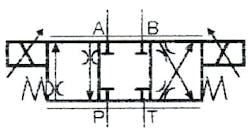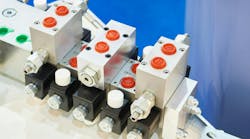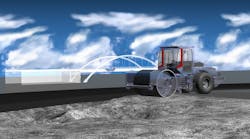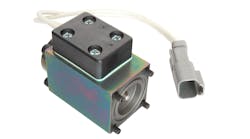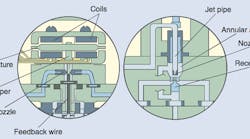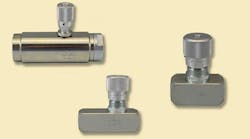Directional control valves perform three functions: stopping, allowing, and changing the direction of fluid flow. Although international standards describe a valve by its number of ports, it is common in North America to use the term ways, so a 4-way valve is a valve having four ports. Double-acting actuators require 4-way valves because they pressurize and exhaust two pairs of ports independently. Both hydraulic and pneumatic circuits use them, but a 3-position, 4-way valve is more common in hydraulic circuits.
In addition to the normal hookup shown in Fig. 1, many alternative circuit arrangements can be used with 4-way valves to meet specific application requirements. The three sequences show a 4-way valve in action. A double-acting cylinder only needs one 4-way directional valve to extend and retract it.
